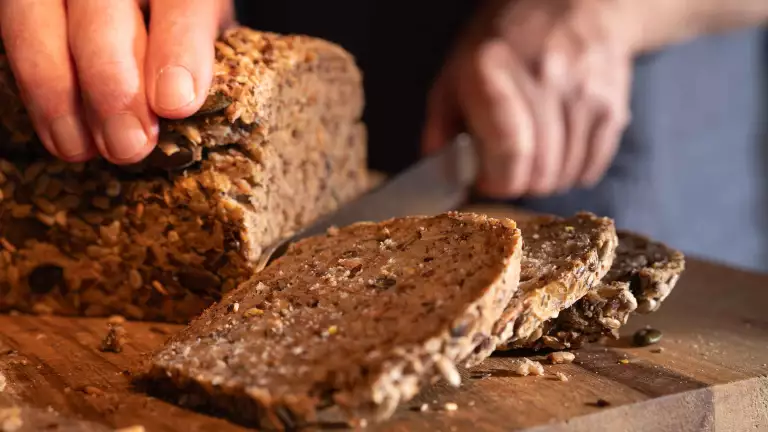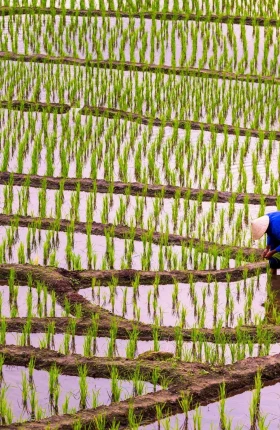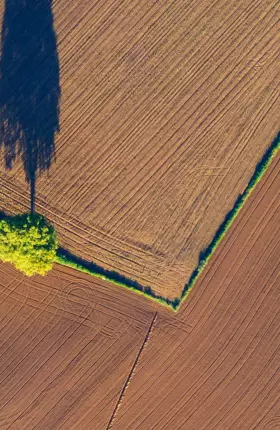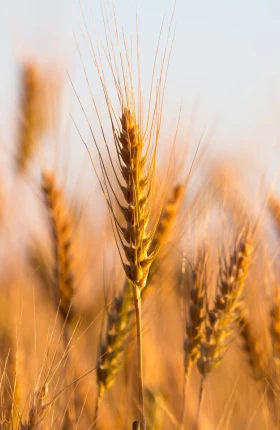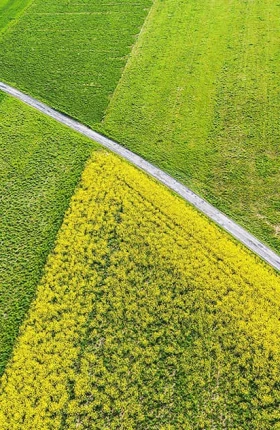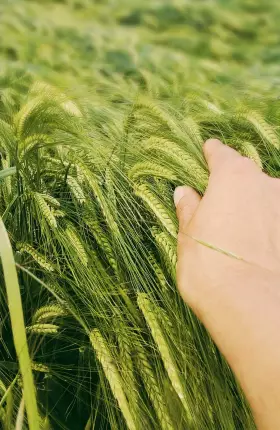The story of grain consumption over the centuries reveals its powerful impact on nutrition, food systems, the environment, and economies.
Today, most of the grains we eat are stripped of the bulk of their important nutrients, and these “refined” grains are a substantial contributor to today’s diet-related diseases. Further, the way we produce grains globally has come to have a detrimental environmental impact. With a shift to growing and eating whole grains additionally fortified with vitamins and minerals (micronutrients) along with more diversified cereals, we can address both the nutritional and environmental issues and move toward much greater planetary and human health.
The Best Thing Since Sliced Bread?
Until the Industrial Revolution, most grains were consumed in their whole form—for example, as whole wheat flour—with products such as refined flour a premium offering. But the advent of industrialized mills in the 19th century introduced refined grains to much of the world. It became easy—and cheaper—to polish off the bran and sift out the germ of wheat and corn, rendering these grains more shelf-stable and cheaper at retail—and less nutritious.
Today, the world’s population eats grains—mostly wheat, rice, and corn in their refined form—more than any other type of food. In low- and middle-income countries, grains make up more than 50% of calories consumed.
The nutritional deficits of refined grains—through the loss of essential vitamins, minerals, fiber, proteins, healthy fats, and phytochemicals—are not their only drawback. While meat production is responsible for greater carbon emissions per ton than grain production, the massive volume of grains grown every year translates to significant environmental damage. In fact, according to a range of climate and nature metrics, grains have the biggest environmental impact of all food crops. (See Exhibit 1.)
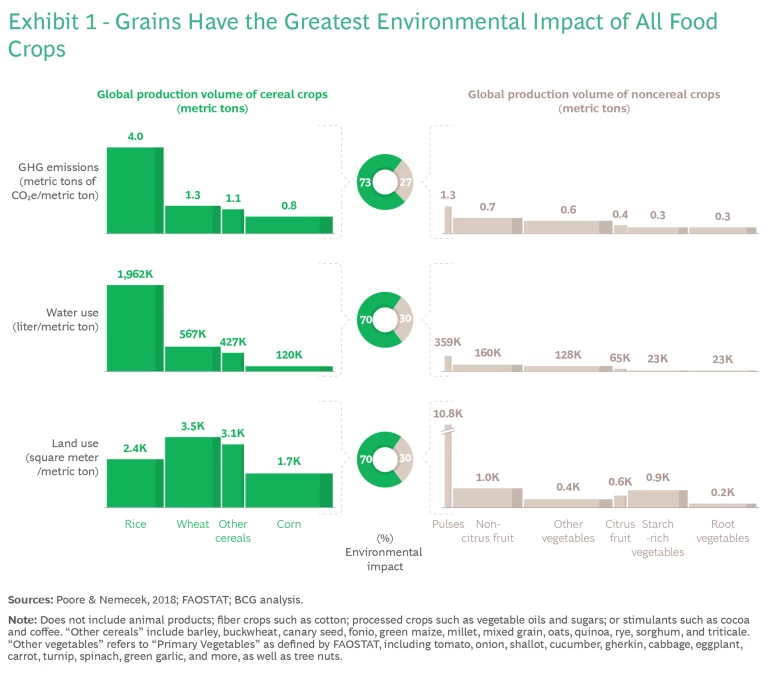
To put this in perspective, the greenhouse gas emissions caused by global grain production are greater than the emissions of Russia, Brazil, and Germany combined. Grain crops are also particularly vulnerable to global warming. For example, with each 0.5°C increase in temperature, corn yields are expected to fall by 10% to 20%.
The Fortitude of Fortified Whole Grains
Shifting to greater production and consumption of fortified whole grains can be a powerful solution at the intersection of food insecurity, poor nutrition, and environmental impact.
The nutritional benefits of eating whole grains are clear. They are made up of three essential food components: the bran, germ, and endosperm. Refined grains retain only the carbohydrate-dense endosperm and are stripped of the essential nutrients found in the bran and germ.
Shifting to greater production and consumption of fortified whole grains can be a powerful solution at the intersection of food insecurity, poor nutrition, and environmental impact.
The practice of fortifying refined grains to enhance their nutritional profile goes back many decades. The US introduced the mandatory fortification of wheat flour in 1943. Today, 93 countries require the fortification of wheat, 19 of corn, and only eight of rice.
The consumption of whole grains and the fortification of grains vary across crops but have significant room for growth. For example, only 26% of wheat and 3% of rice are fortified globally. And less than one-quarter of all grains are consumed in their whole form.
If we combine both practices and fortify whole grains, the result is an even more nutritious form of these crops. Add the environmental benefits to the nutritional gains, and fortified whole grains become a powerful tool in three significant ways.
They provide greater nutrition with fewer raw inputs. And because they pack a greater nutritional punch with less volume, they reduce the environmental footprint by emitting fewer greenhouse gases and requiring less land and water to produce the same amount of food. Looked at another way, fortified whole grains would take no additional resources than we use today to produce 20% more food for human consumption—particularly relevant in food-insecure environments. Finally, fortified whole grains—which require less land and fewer ecosystem-damaging synthetic inputs such as fertilizers and pesticides—can promote biodiversity and reduce deforestation.
Fortified whole grains provide greater nutrition with fewer raw inputs, reducing the environmental footprint of grain production.
The impact is striking:
- Fortified whole grains deliver six to seven times the nutritional value as the same amount of a grain that is later refined.
- Unlike the process required for converting raw crops to refined grain products, using only a portion of the grain, converting to whole grains is much more efficient—and reduces the environmental impact by about 20%.
- By using fewer synthetic inputs, soil and ecosystem health improves, and the need for smaller parcels of land reduces deforestation and thus habitat and biodiversity loss.
Changing the Impact of the Big Three Grains
When it comes to the sustainability of our food systems, experts have rightly paid significant attention to how we grow crops, including grains, weighing the benefits of using practices such as agro-ecology and regenerative agriculture. But another valuable tool is to make shifts in what we produce and consume.
BCG’s analysis shows that growing, processing, and consuming fortified whole grains can have transformational benefits across a range of metrics. In our research, we focused on the “big three”—wheat, corn, and rice—and compared their fortified whole form to their refined form.
To assess the environmental impact of fortified whole grains, we examined greenhouse gas emissions, land use, water use, fertilizer use, pesticide use, and biodiversity—metrics that reflect five of the six “planetary boundaries” that have already been crossed, such as climate and land system change. (Planetary boundaries describe the limits within which human activities can operate in order to avoid destabilizing the biological and chemical cycles that underpin the planet’s systems and decrease the risk of irreversible environmental change.)
In the more industrialized food systems, such as in the US, the big three grains account for the majority of grain production and are grown in a way that is highly efficient and leads to high yields. But the process requires significant synthetic inputs, including fertilizers and pesticides, which erode soil health and compromise biodiversity.
In less industrialized systems, such as across Africa, there has been a significant shift to producing corn, wheat, and rice—from 60% of all cereals grown in 1965 to 81% in 2020. But production is often inefficient, with seeds that aren’t well suited to the climate, a lack of necessary irrigation, and a limited and expensive fertilizer supply. Over time, this inefficient and resource-intensive approach has displaced production of indigenous grains, which are well suited to the climate. (See “The Promise of Wonder Crops.”)
The Promise of Wonder Crops
In Africa, these “wonder crops,” particularly cereals such as millet, tef, fonio, and sorghum, are better suited to their environment. They’re less resource intensive, more pest and drought resistant, and more adapted to regional terrains than the big three.
We analyzed two of these crops, sorghum and millet. Sorghum, which can play a similar role in dishes as white rice, is three times more nutritious, with 48% lower environmental impact per volume unit and 82% lower impact per nutritional unit. Millet has a relatively low yield compared with refined corn, which limits its benefits on a volume basis, but it is six times more nutritious and has 78% lower impact per nutritional unit.
Overall, wonder crops provide an opportunity to drive crop species and global diet diversity in a way that is environmentally efficient given the amount of nutrition they produce. Shifting to these crops will require more research to optimize their yield and promote their cultivation.
We quantified the impact of these grains across both types of food systems, using archetypal countries that could represent each. We weighed the environmental impact against the output, in terms of both the volume produced and nutrition delivered. And to assess nutrition, we compared the value of each fortified-whole-grain food versus its refined counterpart along a full range of macronutrients and micronutrients. (See “Grain Analysis Methodology.”)
Grain Analysis Methodology
To quantify environmental impact, we leveraged existing data from lifecycle assessments and other sources to find the greenhouse gas emissions and land, water, pesticide, and fertilizer use from cradle to farm gate. We also considered the efficiency with which the raw form of the crop is converted to its flour form (for wheat and corn). The more efficient this conversion, the lower the impact of a unit of flour or rice. This process is highly efficient for whole grain flour, where the entirety of the raw grain is used, but is inefficient for refined flour, where only a portion of the grain is directly used.
To quantify nutritional density, broad alignment on a single, standardized methodological approach does not exist. There are various metrics and indices that are further nuanced by regional differences in nutrient needs. For example, the recommended daily values for vitamin A are not the same in the US as they are in Zambia. Our analysis errs on the side of simplicity by calculating the difference of each nutrient in the whole or fortified crop against its refined counterpart, and then averaging these differences to arrive at an overall nutritional multiplier for each crop. A consequence of this approach is that micronutrients and macronutrients are weighted equally. However, we firmly believe that simply increasing micronutrient content does not obviate the need to ensure sufficient macronutrient intake.
In general, fortified whole grains deliver significantly more fiber and various micronutrients, or essential vitamins and minerals. They are also richer in proteins and healthy fats than their refined counterparts. Although fortified whole grains are more nutrient dense and we focus on this in our analysis, it is important to note that micronutrient density is not a replacement for macronutrients—the carbohydrates, protein, and fat that people need and that cannot be added through fortification. (See Exhibit 2.)
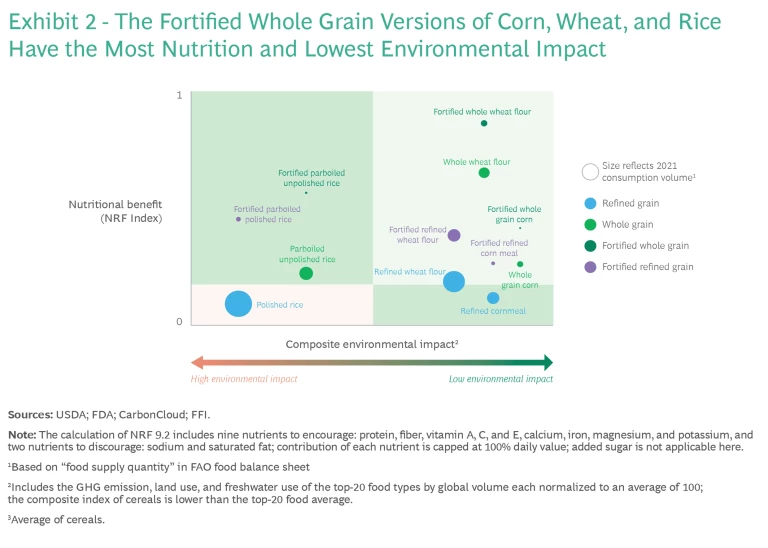
Across metrics, fortified whole grain foods offer a significant opportunity to reduce environmental impact, especially if nutrition is factored in. (See Exhibit 3.) These grains provide six to seven times greater nutrition than the same amount of their refined versions. They drive 20% to 25% less impact on greenhouse gas emissions and land, water, fertilizer, and pesticide use per volume unit, as well as 85% to 90% less environmental impact per nutritional unit.
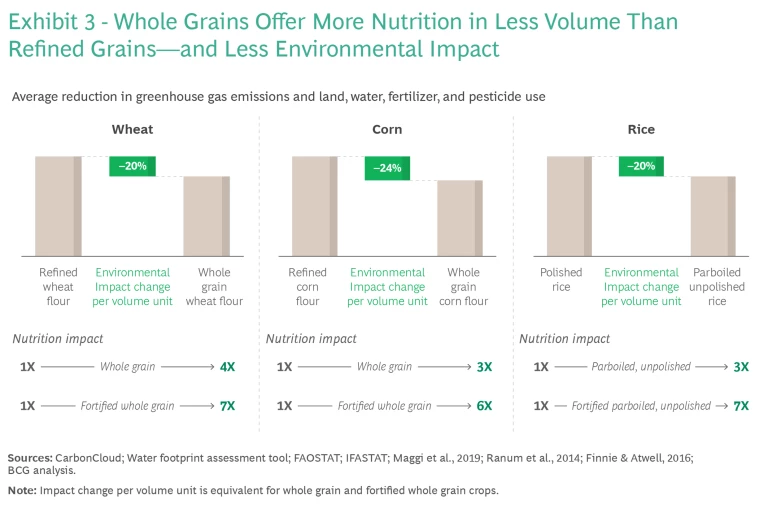
Shifting a significant portion of our grain production from refined grains to fortified whole grains would be a powerful decarbonization tool. A 30-percentage point increase in the adoption of whole grains globally would result in a 120 million metric ton CO2e decrease in greenhouse gas emissions annually. (See Exhibit 4.)
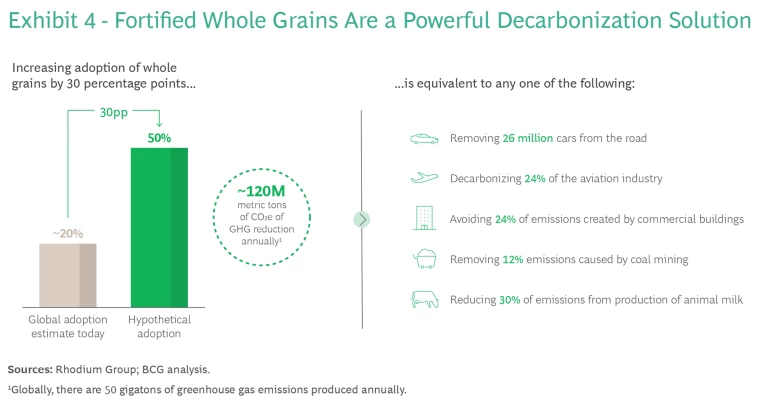
Next Steps for All Players
A full replacement of the refined versions of the grains we eat today isn’t realistic. In addition, the shift toward fortified whole grains should be gradual. (See the sidebar “The Question of Animal Feed.”)
The Question of Animal Feed
The bran and germ that are removed from the endosperm during the refining process are diverted to animal feed. A full and sudden switch to whole grains could affect the supply and price of the fodder farmers give to their animals. However, our analysis shows that even a 100% switch to whole grains would affect only about 10% of the total feed supply and about 7% of the cost.
Further, we expect that adoption will naturally be gradual both because of demand constraints in higher-income countries and supply constraints in lower-income countries, leading the feed market to a new equilibrium point over time. For example, Denmark launched an ambitious whole grain adoption program with strong government support, increasing adoption at a CAGR of 6%. On the supply side, millers in lower-income countries tend to be very fragmented. In Kenya, for example, small or micro-sized millers make up 98% of the market. These dynamics suggest a slow shift to whole grains, further lowering the impact on the feed market.
Nonetheless, using more of these foods can be a dramatically effective tool in both mitigating and adapting to changes in climate and nature.
Players across sectors and value chains can seize this opportunity, although they must do so while being sensitive to the cultural contexts that define food preferences.
Governments can take action directly by shifting institutional procurement to fortified whole grains, particularly for school meals. And they can take indirect action by enforcing existing fortification mandates and promoting legislation that requires subsidies or tax breaks to support the cultivation and fortification of whole grains and the use of environmental labeling.
NGOs can strongly encourage the production and consumption of whole grains and fortified whole grains. And they can push best farming practices and reductions in food loss and waste.
Companies can increase the share of whole grain products within their portfolios and incorporate higher percentages of fortified whole grains in new product lines as part of their net zero ambitions. To make this work, they must offer products that deliver comparable functional attributes—including shelf life, cooking characteristics, and taste—that consumers value in refined-grain products.
Agriculture is a major contributor to the planetary boundaries that have already been crossed, with grains the biggest perpetrator among food crops. We need to shift to resource-efficient and cost-effective high-quality nutrition. Fortified whole grains can deliver this powerful solution for people and the planet.
The authors would like to thank the following BCG colleagues for their contributions to the development of this article: Helen He, Katherine Kanner, Pilar Pedrinelli, Nina Chatrath, Santiago Arrieta, and Sarah Davis. They also thank Thomas Nemecek, Andrew Thorne-Lyman, Peiman Milani, and David Kamau for sharing valuable insights.
